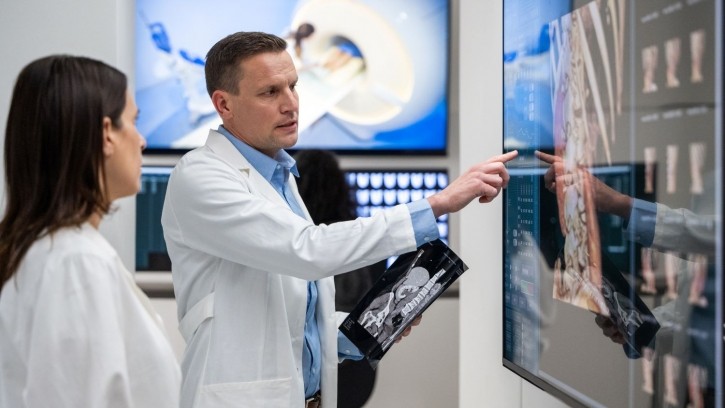How modern trial designs propel cancer therapies to the market - interview

Ravi Karra, VP of Oncology at the service provider Advanced Clinical, explains how advanced imaging techniques and trial designs can overcome the obstacles of taking a cancer drug to market.
Clinical drug development is traditionally sequential, going from small phase 1 trials to assess safety all the way to large phase 3 trials and beyond to confirm the drug’s benefits in patients. With increasing adoption of gene and cell therapies, companion diagnostics and precision medicine, however, demand is growing for modern trial designs to support these sophisticated strategies.
Based in Deerfield, Illinois, US, Advanced Clinical helps clients to speed up the clinical development of their therapeutic assets. For example, the firm operates as a contract research organization (CRO) and provider for key services in clinical trials including monitoring, trial planning and supply chain management.
Ravi Karra, Advanced Clinical’s VP of Oncology, tells us how the use of more adaptive clinical trial designs and imaging technologies such as magnetic resonance imaging (MRI) and positron emission tomography (PET) are propelling drug development and clinical trials in the cancer space.
How is the landscape of oncology drug development evolving, particularly for solid tumors?
The field of oncology drug development is undergoing significant changes, especially for solid tumors. The rise of immunotherapies and cell and gene therapies requires new, more efficient and effective methods for designing and evaluating clinical trials. By using innovative trial designs and advanced imaging techniques, we can better address the unique challenges of early drug development and ultimately improve patient outcomes.
What are the main challenges associated with the traditional model of drug development?
The traditional linear and sequential drug development model faces several challenges, particularly in the context of modern therapies like immunotherapy and cell and gene therapies. It involves lengthy timelines for Go/No-Go decisions and high costs, making it difficult to make timely decisions about the continuation or termination of trials based on safety and efficacy data. The absence of strong biomarkers also complicates patient stratification and the personalization of treatment approaches.
What can help overcome these challenges?
Innovative trial designs, such as seamless adaptive designs, can significantly mitigate these issues. These designs enable a smooth transition from phase 1 to phase 2 within the same protocol, which helps to avoid delays caused by protocol and trial initiation processes. This approach speeds up the development timeline and reduces costs. Also, adaptive designs facilitate real-time data analysis and decision-making, allowing for more informed Go/No-Go decisions as new safety and efficacy data become available.
Can you explain the role of advanced imaging modalities in oncology trials?
Advanced imaging modalities, including functional MRI, fluorodeoxyglucose (FDG)-PET scans and digital biomarkers, provide crucial insights into tumor biology and the patient's response to treatment. Unlike traditional imaging, which focuses on anatomical changes, these advanced techniques offer functional and molecular data. This allows for earlier detection of how tumors respond to treatments and helps identify predictive biomarkers, enhancing the overall accuracy and effectiveness of clinical trials.
Could you provide an example of how innovative trial designs and advanced imaging modalities have been successfully integrated?
A great example is the use of advanced imaging in the preoperative treatment of squamous cell carcinoma of the head and neck with the drug afatinib. In this ‘window of opportunity’ trial, FDG-PET and MRI were employed to evaluate the tumor's response to afatinib before surgery. This integration of advanced imaging allowed researchers to assess treatment efficacy and safety in real time, which informed subsequent clinical decisions and development strategies.
What is the overall impact of integrating innovative trial designs and advanced imaging on drug development for solid tumors?
Integrating innovative trial designs with advanced imaging techniques is a multifaceted approach that accelerates the translation of promising therapies from research to clinical practice. By combining adaptive methodologies and sophisticated imaging, we can speed up the process of bringing effective treatments to patients, ultimately leading to better outcomes for those patients with solid tumors.











